
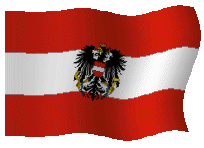
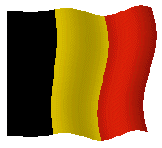





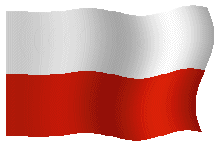

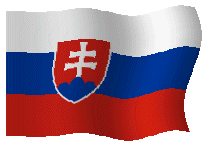


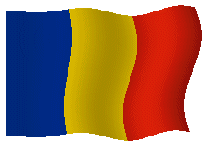
ALADIN
NEWSLETTER 28

January-July 2005
Copyright: ©ALADIN 2005
Scientific Editor: Dominique GIARD
Web Master: Patricia POTTIER & J-D GRIL
Lay out & Linguistic Advisor: J-A MAZIEJEWSKI
This paper has only a very limited circulation and permission to quote from it should be obtained from CNRM/GMAP/ALADIN
CONTENTS
1.EDITORIAL 5
1.1.EVENTS 5
1.1.1.ALADIN workshop 5
1.1.2.AROME project review 5
1.1.3.STORMNET 5
1.1.4.Other workshops 5
1.1.5.Bad news 7
1.2.ANNOUNCEMENTS 7
1.2.1.EWGLAM/SRNWP meeting, Ljubljana (Slovenia), 3-5 October, 2005 7
1.2.2.10th Assembly of ALADIN partners 8
1.2.3.AROME workshop, Brasov, (Romania), 21-25 November, 2005 8
1.2.5.And next ... 9
1.3.ALADIN 2 9
1.3.1.HIRLAM Council's resolution 9
1.3.2.HMG-CSSI meeting 10
1.3.3.Next medium-term ALADIN research plan (2005-2008) 12
1.3.4.Special project at ECMWF? 13
1.4.GOSSIP 15
2.OPERATIONS 16
2.1.INTRODUCTION 16
2.2.Changes in the operational version of ARPEGE 16
2.3.AUSTRIA 17
2.4.BELGIUM 17
2.5.BULGARIA 17
2.6.CROATIA 17
2.7.CZECH REPUBLIC 17
2.8.FRANCE 17
2.9.HUNGARY 17
2.10.MOROCCO 18
2.11.POLAND 18
2.12.PORTUGAL 18
2.13.ROMANIA 19
2.14.SLOVAKIA 19
2.15.SLOVENIA 19
2.16.TUNISIA 19
3.1.AUSTRIA 20
3.2.BELGIUM 20
3.3.BULGARIA 20
3.4.CROATIA 20
3.5.CZECH REPUBLIC 20
3.6.FRANCE 20
3.7.HUNGARY 20
3.8.MOROCCO 21
3.9.POLAND 21
3.10.PORTUGAL 21
3.11.ROMANIA 21
3.12.SLOVAKIA 21
3.13.SLOVENIA 21
3.14.TUNISIA 21
3.15.HIRLAM 21
4.Ph.D THESIS 23
4.1.Radi AJJAJI : Incrementality deficiency in ARPEGE 4d-var assimilation scheme 23
4.4.Karim BERGAOUI: Further improvement of a simplified 2d variational soil water analysis 23
4.5.Vincent GUIDARD: Evaluation of assimilation cycles in a mesoscale limited area model 23
4.7.Raluca RADU : Extensive study of the coupling problem for a high-resolution limited-area model 23
4.10.Klaus STADLBACHER : Systematic qualitative evaluation of high-resolution non-hydrostatic model 24
4.12.Malgorzata SZCZECH-GAJEWSKA : Use of IASI/AIRS observations over land. 24
4.13.Jozef VIVODA : Application of the predictor-corrector method to non-hydrostatic dynamics 24
5.PAPERS and ARTICLES 25
5.1.ARPEGE and ALADIN models coupling experiments: J.Barckicke, Y.Bouteloup, J.L.Ricard, K.Yessad. 25
5.2.Operational implementation of ALADIN 3DVAR at the Hungarian Meteorological Service : G. Bölöni 25
5.8.Testing radiation and cloudiness parameterization: M. Tudor, I. Stiperski, D. Drvar. 25
5.11.Latent heat nudging: J. Cedilnik.. 25
5.12.ALADIN NORAF double suite based on 3D-VAR assimilation technique. Zahra SAHLAOUI. 25
6.PUBLICATIONS 26
6.1.Haiden T. and C. D. Whiteman: 26
6.2.Whiteman C. D., T. Haiden, B. Pospichal, S. Eisenbach, and R. Steinacker: 26
6.3.Guidard V.,C. Fischer, M. Nuret and A. Dziedzic: 26
6.4.Bénard P. , J. Masek, AND J. Vivoda: 26
6.5.Deckmyn A., and L. Berre: 26
6.6.Pailleux, J. et J.-F. Geleyn: 26
6.7.Geleyn J.-F., P. Bénard and R. Fournier: 26
6.8.Fischer C., T. Montmerle, L. Berre, L. Auger and S.E. Stefanescu: 26
6.9.Belo Pereira M. et L. Berre: 27
6.10.Berre, L., S. E. Sttefanescu and M. Belo Pereira: 27
6.11.Gérard, L. and J.-F. Geleyn: 27
6.12.Soci C. , C. Fischer and A. Horanyi: 27
6.13.Stefanescu, S. E., L. Berre and M. Belo Pereira: 27
6.14.Žagar N., M. Žagar, J. Cedilnik, G. Gregorič and J. Rakovec: 27
This is the first trial to deport some of the editorial work of the Newsletter: András Horányi was asked to write the editorial part of the Newsletter. This is the reason for the slightly modified style and content of this part of the Newsletter.
A huge and successful ALADIN workshop was organised in Bratislava with the participation of 74 registered participants from 19 countries (is it a record?). Many-many thanks for the local organisers and especially to Maria Derkova and Michal Majek. The main sessions of the workshop were as follows:
General presentations on projects and models
Equations and interfaces
STORMNET
Dynamics and coupling
Data assimilation
Physics, case studies and diagnostics
Verification and adaptation
Technical issues
SURFEX
EPS and downscaling
The workshop was completed by final discussions (see details on the ALADIN website, http://www.cnrm.meteo.fr/aladin/meetings/Wk2005/program.html ). And it was preceded by the first HMG-CSSI meeting (see hereafter).
The host of the next venue is Sofia (Bulgaria).
On 30th of June an AROME project review was organised in Toulouse, where Eric Brun (head of research at Météo-France) had invited two researchers from the ALADIN community: Bart Catry and Andras Horanyi (with the condition of understanding French). The meeting was based on the presentation of Francois Bouttier and the discussions were focusing on the progress in modelling and data assimilation and then on the planning aspects. French summary of the meeting is available from Toulouse.
The STORMNET proposal was refused at the first evaluation step. After this failure it was decided to pursue our efforts for submitting a new proposal, and first discussion was realised during the ALADIN workshop in Bratislava. The new call is already published and the deadline is 28th of September, 2005.
The main highlights of the discussions in Bratislava are available on the STORMNET web site : http://www.cnrm.meteo.fr/stormnet/v0.0/ and on the pages of the workshop.
The 2005 All Staff Meeting (ASM) was organized in Dublin by Met' Eireann on March 14-16. It was the first one hold in the framework of an enhanced cooperation between the HIRLAM and ALADIN consortia. Presentations and discussions were marked by this partnership and the need to refine the strategy for going towards very high resolution.
The program was quite dense and presentations of high quality, but schedule was perfect with even more time than expected for working groups. Official and informal discussions have been very carefully prepared.
HIRLAM scientists did or want to start quickly working with the ALADIN/AROME code in an enlarged partnership, though they are afraid of loosing their identity ("being eaten by France"). However they felt more confident on this issue at the end of the meeting (there was no reason to worry so much).
A detailed report was sent by Dominique Giard to
the "coordala" list, and the proceedings are
available in HIRLAM Newsletter 48 :
http://hirlam.knmi.nl/
☞ "Publications"
☞
"Newsletters"
More
details on the SRNWP web site :
http://srnwp.cscs.ch/Lead_Centres/2005Bologna/Agenda.htm
http://srnwp.cscs.ch/Lead_Centres/2005Bologna/ReportFinalDiscussion.htm
This
huge event (around 100 presentations and 160 posters) was held on
April 18-22, 2005, in Prague (Czech R.).
Presentations are available on :
http://www.chmi.cz/meteo/ok/dasympos/index.html
A coordination meeting between ALADIN and HIRLAM scientists was held beside the meeting, to discuss research plans in data assimilation. The minutes will be available on the ALADIN web site.
The 28th
International Conference on Alpine Meteorology (ICAM) and the
Annual Scientific Meeting of the Mesoscale Alpine Programme (MAP)
2005 was held in Zadar (Croatia), from 23 to 27 of May. The
proceedings will be published in Meteorologische Zeitschrift, Special
Issue on ICAM/MAP2005, and presentations are available on :
http://meteo.hr/ICAM2005/
The performances of the different models available during the MAP field experiment were presented, with comforting results for ALADIN(-LACE) :
|
Performances of models along MAP : precipitations (from Pedemonte et al., E.Richard) |
|
|
Maximum TP for day 2 (MC2 day 1) – Rain gauge |
Mean bias over the SOP period |
More
details on the SRNWP web site :
http://srnwp.cscs.ch/Lead_Centres/2005-Vienna/Summaries_of_the_Presentations.htm
The ALADIN project was touched by the death of Vladimir Ivanovici, Deputy Director of the Romanian National Institute for Meteorology and Hydrology and ALADINist of the first hour.
Environmental Agency of the Republic of Slovenia, Meteorological office is organizing the 27th meeting of the European Working Group on Limited Area Modelling (EWGLAM) and the 12th meeting of the Short-Range Numerical Weather Prediction (SRNWP) Network, to be held in Ljubljana between the 3rd and 5th October 2005.
The special topic of this year's EWGLAM meeting is: Modelling in very high resolution, i.e. at a few kilometres scale.
Contributions concerning not only the models' accuracy in terms of predicted values, but also concerning their behavior at these scales, in comparison to observations with high temporal resolution, could be particularly interesting.
An informal ALADIN meeting will be organized beside the workshop, to discuss operational updates, the next research plan, etc ... A reduced HMG-CSSI meeting will be hold on Thursday, 6th, to discuss the common HIRLAM-ALADIN research issues.
More informations on the workshop pages : http://www.arso.gov.si/ewglam_2005/ !
The next
Assembly of ALADIN Partners will be organized on October 21st
2005, in Bratislava, Slovakia. It will have to deal with the new
Memorandum of Understanding (with preliminary discussions in
Heidelberg in September), the cooperation with HIRLAM, the next
research plans, ...
The location of the 1st AROME training course is now established: Poiana Brasov. It will focus on the most important points for running AROME in the forecast mode, considering both the theoretical and the practical aspects of :
Méso-NH physics,
ALADIN NH dynamics,
AROME prototype,
including the externalized surface module.
The registration deadline is September 30th 2005. Information is available on a dedicated page on the NMA web site : http://www.inmh.ro/images/Arome2005/index.htm
After the successful training
courses organized in Toulouse (mid-March) and the TCWGPDI workshop
(in Prague) it was an idea to organize a working week on data
assimilation between ALADIN and HIRLAM scientists. According to the
original idea it was foreseen that all the HIRLAM activities in the
field of data assimilation will be presented to the ALADIN
researchers and at the same time HIRLAM people would learn about
theoretical and practical aspects of the ALADIN data assimilation
system. Later on the idea was oriented more on the training aspects
and moreover the scope was also extended to the ALADIN code
maintenance and merging issues. Finally the workshop will be
organized in Budapest between 14-18 November having more code
maintenance and phasing issues in the first two days and data
assimilation practical concerns for the last three days. This
organization will allow participants to participate either at the
very beginning or the second part of the workshop. In
the very preliminary program 2 days are devoted to code maintenance
and merging issues, and 3 days to data assimilation practical issues.
More details at :
http://www.cnrm.meteo.fr/aladin/meetings/budaNov2005.html
Representatives from other consortia are welcome. Among other issues, a new strategy for data assimilation and an enhanced cooperation between consortia will be discussed.
More details at the meeting web site: http://cosmo-model.cscs.ch/public/agenda2005.htm
Special topic for 2005 is : "Convection resolving models"
LC for Numerical Techniques (De Bilt, The Netherlands)
ALADIN-HIRLAM working week on predictability
etc ...
HIRLAM Resolution on the Collaboration with ALADIN
( HIRLAM Council Meeting, Basel, Switzerland, 11 April 2005)
NOTING:
(1) That the HIRLAM Council at its meeting on 2 June 2004 agreed to a full code collaboration with ALADIN on meso- scale modelling and other agreed areas following the best suited approach across the IFS/ARPEGE/ALADIN/HIRLAM chain;
(2) That the HAC Chairman and the Project Leader were invited as observers to the ALADIN General Assembly 29- 30 October 2004.
CONSIDERING:
(1) The Resolution on ALADIN- HIRLAM cooperation that was adopted by the ALADIN General Assembly;
(2) The presentation on the ALADIN resolution and response to our informal contacts at the HIRLAM Council on 15 December 2004 by Mr. Ivan Cacic as Chairman of the ALADIN Assembly;
(3) The reply to Mr Cacic by the HIRLAM Council on 23 December 2004;
(4) The suppor t by the HIRLAM Evaluation for code collaboration with ALADIN.
ACKNOWLEDGING:
(1) The strong and positive interest shown by ALADIN to engage in a full code collaboration with HIRLAM.
BEARING IN MIND:
(1) The suppor t for this collaboration by individual HIRLAM Council members in response to the recent HIRLAM Evaluation.
EMPHASISING:
(1) That HIRLAM and ALADIN should have observer status at the Assembly and Council meetings, respectively.
DECIDES:
A. To commit itself to a full code collaboration with ALADIN ;
B. That HIRLAM will make fair and strong contributions in agreed areas of expertise to the common HIRLAM/ALADIN code in the agreed collaboration area;
C. That an Agreement (signed before the End of 2005) with ALADIN and Météo-France should be based on the following principles:
(1) Joint arrangements shall be made to coordinate scientific plans and in particular for the common elements agreed by HIRLAM and ALADIN;
(2) The HIRLAM Management Group and the ALADIN Committee for Scientific and Strategic Issues (CSSI) in their meeting in June 2005 shall address common issues that will appear in both the HIRLAM and ALADIN science plans;
(3) The content of the HIRLAM and ALADIN scientific strategies are in line in the collaboration areas;
(4) The cooperation between HIRLAM and ALADIN is included in a consistent way in the new Memoranda of Understanding for the respective organisations;
(5) The detailed conditions of the cooperation are further developed and formulated, including legal and commercial conditions for the HIRLAM and ALADIN members.
Here is the main body of the report sent to ALADIN
Directors and coordinators. The full document is available on the
ALADIN web site :
http://www.cnrm.meteo.fr/aladin/concept/collaboration.html
Conclusions of the first HMG-CSSI coordination meeting
Bratislava, June 5th, 2005
According to the resolution accepted at the last ALADIN Assembly in Split the ALADIN Coordinators for Strategic and Scientific Issues (CSSI) and HIRLAM Management Group (HMG) have met (for list of participants see Appendix A) in order to plan and create a joint science plan between ALADIN and HIRLAM projects. Discussions along this first meeting focused on working practises (How shall we work together?) and common scientific planning (What do we want to achieve together?).
Before going to more details, more general and strategic questions were dealt with. First, the advantage of the IFS/ARPEGE software backbone was recognised: it outweights the associated maintenance constraints since it allows building on the existing pieces without a need of a heavy re-development. Second, it was said that the joint code should encompass a NWP system suitable for scales from synoptic to meso-gamma, which is a quite ambitious goal. These two important points streamlined the following discussion.
Code management and maintenance
The principles of code collaboration were set as follows:
IFS/ARPEGE software as a backbone, as has been the case for ALADIN
Reference code releases (cycles) common with IFS once or twice a year, intermediate cycles for new developments and operations
New developments must be carefully prepared and further maintained by the authors
To begin with,
selection of the modification likely to enter cycles through 3
successive steps:
- control at "team" level, through
transversal thematic scientific coordination
-
HIRLAM-ALADIN-ARPEGE coordination meeting
- ARPEGE-IFS
coordination meeting
Solidarity: all should contribute to maintenance tasks, including phasing (creation and technical validation of new cycles by merging and checking contributions), with the possible emergence of a second phasing centre (beside Toulouse) in a longer term
Evolution as soon
as possible towards a HIRLAM-ALADIN-ARPEGE-IFS coordination
The maintenance tasks in the ALADIN organization roughly correspond to the duties of the system manager and the core group in the HIRLAM one. The involvement of HIRLAM will be a progressive one, as will be code collaboration and will start in autumn 2005. There was an agreement on the following steps:
Training on the IFS-ARPEGE-ALADIN code via an extension of the planned common workshop on data assimilation (Budapest, 14-18/11/2005) to code maintenance aspects
Participation of HIRLAM scientists to the next phasing actions in Toulouse: 2 stays of 1 to 1.5 month at the end of 2005 or the beginning of 2006
Further sustained training of code experts within HIRLAM and ALADIN partners, to face the burden of maintenance brought by such a wide code collaboration
HIRLAM commits to devote a 2 person-year effort (annually) to common code maintenance activities
As first practical exercise, the introduction and interfacing of the HIRLAM physical package into IFS-ARPEGE-ALADIN is considered (modification ready)
Scientific coordination and planning
The following procedure was agreed for this first common planning exercise:
This meeting
(beginning of June):
- identification of emerging topics of
common interest
- identification of relevant contact persons at
each side (forming small subgroups)
End of
August:
detailed identification of common areas of interest for
medium and short term (by the subgroups)
Beginning of
October (around EWGLAM meeting):
finalization of the common plans
(detailed for 2006, main directions for the longer term), based on
the proposals of the subgroups
Before the end of
the year:
presentation of the first plan on common scientific
issues to the ALADIN Assembly and the HIRLAM Council
The following common research objectives were identified (for possible common subjects of interest see Appendix B), and drafting teams in charge of planning were nominated for each issue, as a first step towards a transversal cross-consortia coordination:
Dynamics and Lateral Boundary Coupling
Aim: keeping a top-level non-hydrostatic dynamical core and improving LBC treatment
Drafting team: Per Unden, Radmila Brozkova
(Atmospheric) Physics
There was an agreement on the bases of collaboration:
For the start, keeping the present variety of options (i.e. adding HIRLAM physics to the ARPEGE/ALADIN and Meso-NH ones), letting further "friendly competition” decide on the best combinations;
Design of a set of reference equations and a both clean and flexible physics-dynamics interface;
Use of common validation tools.
Drafting team: Bent Hansen Sass, Laura Rontu, Jean-François Geleyn, Gwenaëlle Hello
Surface (physics, data assimilation, physiographic data)
Collaboration will go on as by the past, with objectives refined once the more technical "externalization" of surface schemes achieved.
Drafting team: Ernesto Rodriguez, Stefan Gollvik, Dominique Giard
(Variational) Data Assimilation
Objectives are more complementary than common as concerns algorithms: only 3D-Var is considered by ALADIN partners in the short term, at all scales, while HIRLAM will go on with 4D-Var assimilation at synoptic scales and considers both 3D-Var (for nowcasting) and 4D-Var for the mesoscale. But many common issues were identified in other domains.
Drafting team: Nils Gustafsson, Harald Schyberg, Claude Fischer
Predictability
There is a strong need and interest at both sides, but science is not yet mature to define the right track. Basic research is needed for the start.
Drafting team : Ben Wichers Schreur, András Horányi
Verification and Diagnostics
This is essential. New methods and diagnostics, especially for the mesoscale and EPS, are to be designed through a close cooperation. Standard scores are clearly not enough.
Drafting team: Gerard Cats, Carl Fortelius, Joël Stein, Jean-Marcel Piriou
System
Aim: common design of simple, efficient and "free" code management tools, and friendly user interfaces
Drafting team: Gerard Cats, Jure Jerman, Eric Sevault
The next common meeting should be hold next spring, between the HIRLAM All Staff Meeting and the ALADIN workshop, provided it keeps consistent with organizations within the new MoUs, not yet known.
Initial planning was produced before the ALADIN workshop for the HMG-CSSI meeting. Those plans were intensively discussed during the workshop. All the available draft plans can be found under http://www.cnrm.meteo.fr/aladin/scientific/planscientif.html (the temporary dedicated site has been closed).
Dominique Giard is in charge of collecting all missing pieces and preparing an executive summary (for Directors) and if possible a complete version too with the next Assembly of Partners. It is still time to send her contributions (there were not so many up to now).
During the last ALADIN workshop in Bratislava the question was raised, whether a special project at ECMWF can be initiated in order to access the ALADIN code put to the HPCF (High Performance Computing Facility) of ECMWF and moreover with the possible execution of simple pre-processing applications, while preparing IFS-based initial and lateral boundary conditions for the ALADIN model (for example ERA40 downscaling, study of the impact of IFS boundaries in ALADIN etc.). The idea was supported in Bratislava and András Horányi volunteered to ask the principle opinion of ECMWF about such project. After contacting Umberto Modigliani (User Support) a positive general answer was received and furthermore it was asked that such project should be initiated by Mété-France. Mété-France (François Bouttier) kindly accepted to write the special project proposal based on some inputs received from the ALADIN Partners (a circular about the project was submitted at the beginning of July for the coordinators of the Partners). The project was submitted mid-July with the following description:
Coupling of ALADIN and AROME
models
to boundary conditions from ECMWF and ERA model data
Météo-France and the other meteorological services of the ALADIN consortium (Algeria, Austria, Belgium, Bulgaria, Moldova, Croatia, Czech Republic, Hungary, Morocco, Poland, Portugal, Romania, Slovakia, Slovenia, Tunisia in 2005) have developed the ALADIN and AROME limited area models, with the help of the IFS/ARPEGE software cooperation agreement with ECMWF. Traditionally, ALADIN and AROME have been coupled to large scale boundary conditions provided by the French ARPEGE global model. The purpose of this project is the investigation of the option to couple ALADIN and AROME to large scale model data, namely, the IFS operational archive and the ERA archives on MARS. This is of scientific and technical interest to all ALADIN participants, as well as to the HIRLAM consortium (Denmark, Ireland, Finland, Iceland, The Netherlands, Norway, Spain, Sweden) who plans to test the ALADIN/AROME software coupled to the ECMWF boundary conditions data products.
HIRLAM and Météo-France have already set up a simplified technical environment, called hirald, on the HPCF in order to facilitate joint work on the ALADIN software. The COSMO-LEPS and HIRLAM projects have shown the usefulness of coupling LAMs to the ECMWF model data, but there is very little experience in this area within the ALADIN consortium. Some pilot experiments (e.g. climatological rain and wind downscaling in Austria, Hungary and Slovenia from ERA-40) have recently demonstrated that coupling ALADIN to ECMWF is feasible and yields interesting results, but some technical and scientific issues deserve further investigation. This project plans to explore the following questions:
technical issues when coupling ALADIN/AROME to ECMWF model data: file preparation, data compression and telecommunication issues
relative merits of coupling ALADIN/AROME to IFS vs ARPEGE models for NWP, using various geographical domains (the ARPEGE variable resolution grid is optimized for Southwestern Europe only, so using IFS output may be particularly interesting for more distant applications)
impact of the large-scale model resolution on the quality of limited-area modelling
desirable resolution and archiving policy of future reanalysis datasets for downscaling using ALADIN and/or AROME
coupling issues linked to the representation of the surfaces
coupling issues linked to the differences in physical packages, e.g. cloud physics
optimisation of an
intermediate coupling model for running at kilometric scales using
AROME
These questions are related to the distinct LAM-EPS project lead by the Austrian Meteorological Service (ZAMG). Here, the intention is (1) to allow scientists from some selected (Cooperating and Non-Member) States access to resources on the HPCF, in order to perform boundary condition file preparation at ECMWF before sending it to their own sites for running the LAMs, and (2) to offer a unified software environment for preparing ALADIN and AROME boundary conditions to all interested States, for experimentation. The planned activities of this project are:
installation and maintenance of the ARPEGE/ALADIN scripts (IFS configurations 901/923) on the HPCF to convert IFS non real time model data on MARS into ALADIN/AROME coupling files
development and testing of new software to resolve model inconsistencies e.g. related to the surface initialization. An important aim of this project is to provide a unified, well-maintained environment for preparing LAM experiments.
preparation, by the Special Project participants, on the HPCF, and storage on ECFS of ALADIN/AROME coupling files for chosen test periods and geographical domains. This item is dimensioning for the Special Project, as it requires HPCF access for all listed participants, and some HPCF and storage resources.
local LAM
experimentation to investigate model performance sensitivity to the
coupling technique. Some LAM runs may be performed on the HPCF as
well for testing purposes. This is where the scientific evaluation
of the boundary condition quality will be performed.
This project will be used for scientific experimentation only. The real-time sending of ECMWF boundary conditions, or the routine execution of LAM applications on the HPCF, are explicitly outside its scope. The list of scientists involved in the project may be extended to other scientists from ALADIN cooperating services during the lifetime of the project.
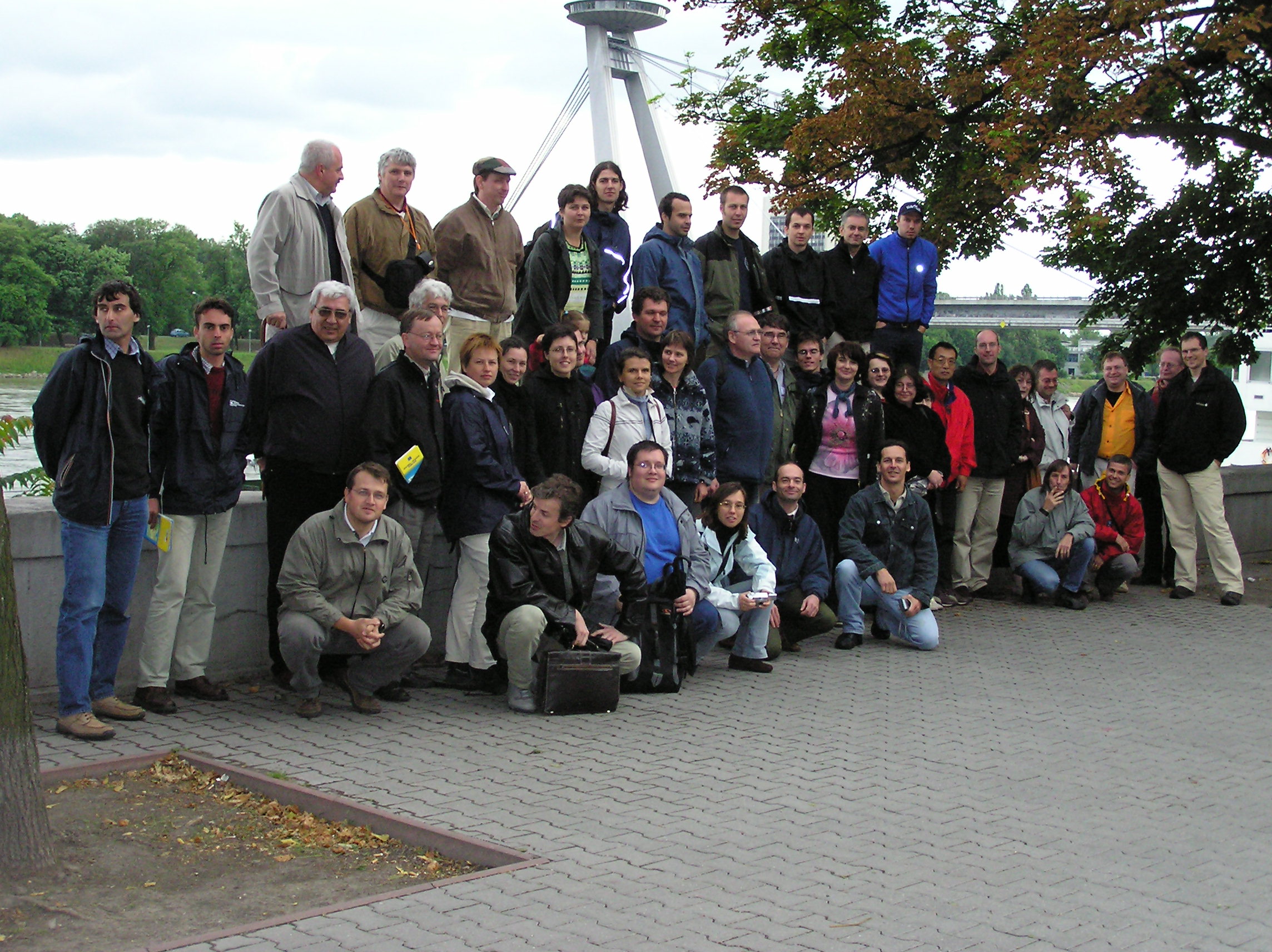
Many thanks to marvellous Mariska and her colleagues for a very successfull workshop despite an apalling weather.
A Reminder: Whenever using MF-KIT, don't forget to send me all receipts, flights coupons etc..
Another Reminder: If no one is picking you up at the airport, once at the main gate, don't forget to ask for the enveloppe bearing your name.
(more details joel.stein@meteo.fr)
8th March: modification of the mixing lengths of the turbulence scheme and use of the AMSU-A radiances of the AQUA satellite
A new formulation of the mixing lengths has been proposed by Eric Bazile (Météo-France) and tested against the GABLS data set (see the previous Newsletter). This modification has been tested together with an increase of the thermal inertia of the vegetation. This second modification was necessary because the diurnal variation of the bias of the temperature was increased by 20 % when only the modification of the mixing length was taken into account. Thus, the thermal inertia of the vegetation returned to the value operational before the last change, operated the 19 October 2004. This new turbulence scheme was tested over Europe during a particularly cold winter and provides improved forecasts for the geopotential height and wind over this region but also in the southern hemisphere (Figure 1).
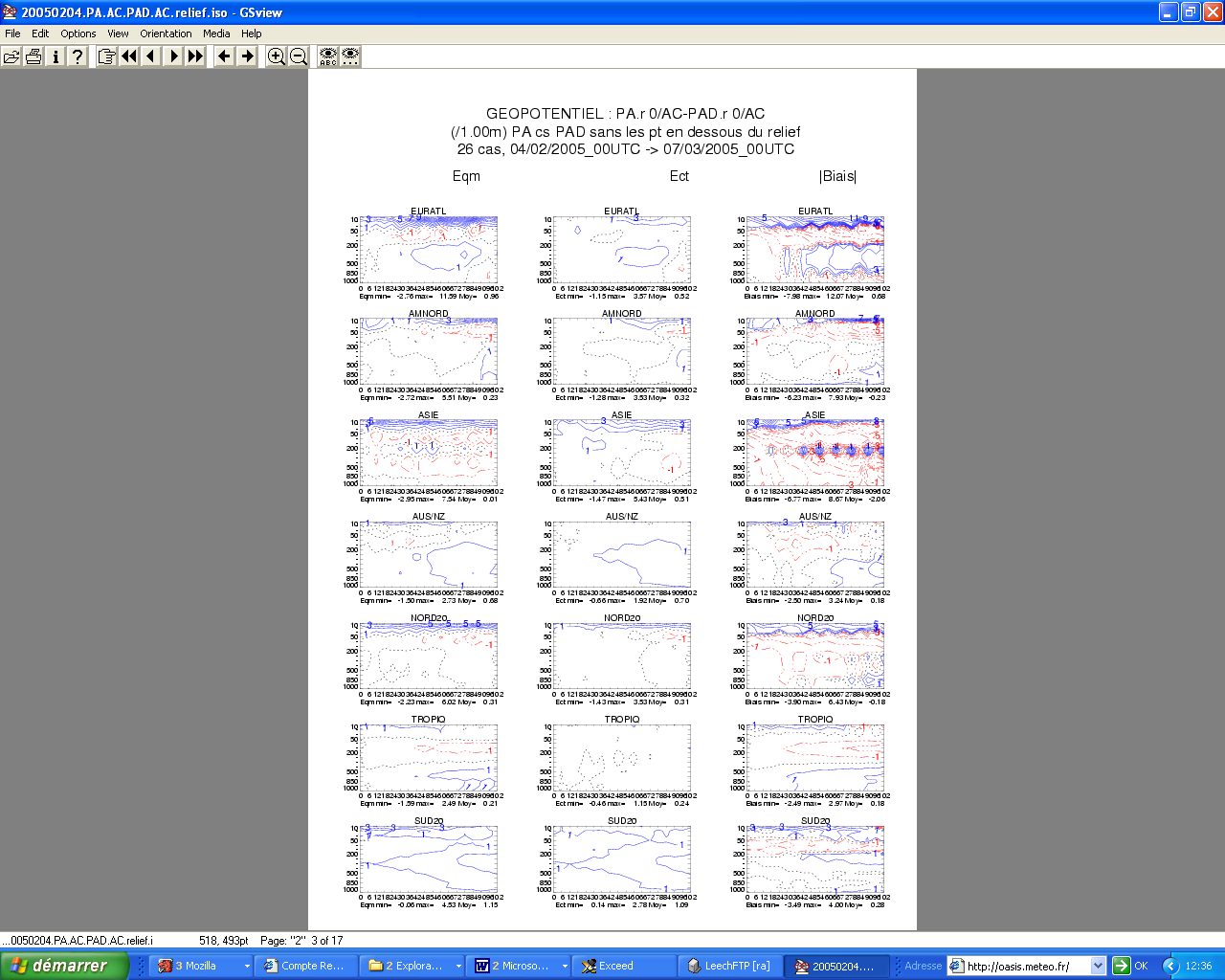
Figure 1: First parallel suite in 2005: comparison of the operational forecast and the new version against the TEMP observations. The isolines of the geopotential are plotted every meter. The blue isolines correspond to an improvement and the red ones to a deterioration.
31st mai: technical change (cycle 29T1)
This is a technical change which leads to a neutral impact for the quality of the forecasts. Among the technical changes, we can mention that the cycle 8 of the RTTOV library, necessary for the assimilation of the satellite radiances, is now operational. And, as an unexpected by-product, a small increase in the size of the coupling files, by about 3 %, has been noticed.
(more details thomas.haiden@zamg.ac.at)
There have been no changes in ALADIN-AUSTRIA since the last Newsletter.
(more details olivier.latinne@oma.be)
We actually run ALADIN on cycle 28T3 with a patch of low cloudiness developed by the Prague group.
We are planning to make two important modifications for the beginning of October, we will:
1) start to run ALADIN version 29 in a parallel chain on a new Silicon Graphics (SGI) parallel computer with 56 Itanium2 processors, 112 GB RAM and 2 x 1168 local disk.
2) make 4 runs by day.
(more details andrey.bogatchev@meteo.bg)
No news.
(more details tudor@cirus.dhz.hr,ivateks@cirus.dhz.hr)
See the general report : Op_Hr.pdf
(more details filip.vana@chmi.cz )
(more details joel.stein@meteo.fr)
No specific changes in the operational version of the ALADIN-France model.
It should be mentioned that a test of the 3d-var assimilation scheme for this model has been tested together with the move to cycle 29T1. This was the first step of the work performed in Météo-France to render operational an assimilation scheme for the LAM ALADIN-France (see the Bratislava presentation of Stein et al., 2005). A second version of the 3d-var assimilation scheme has been implemented and tested during summer 2005 and has led to a final approval of this version and a passage as operational model, on the 25th July 2005. This will be documented in the next ALADIN Newsletter.
(more details kertesz.s@met.hu)
Significant changes were realised as far as the operational suite is concerned at the Hungarian Meteorological Service. After the full validation of cy28, this cycle is to be used for operations. The modifications of the operational suite were carried out in two consecutive steps:
a) The horizontal and vertical resolutions of the model are modified in dynamical adaptation mode (at the beginning of the year). The new characteristics of the model were as follows:
Horizontal resolution: 8 km
Vertical resolution: 49 levels
Grid: linear
b) The dynamical adaptation was replaced by the
three-dimensional data assimilation (3d-var) system (on 17th of May,
2005). The observations used are : SYNOP, TEMP, ATOVS: AMSU-A,
AMDAR
(More details about the basic evaluation of the 3d-var
system can be found in a separate article of this Newsletter)
Parallel suites are still kept alive, which are as follows at the moment:
ALADIN dynamical adaptation in 8 km resolution (49 levels)
ALADIN dynamical
adaptation in 12 km resolution (37 levels)
The monitoring of all operational and parallel suites are based on web technology and comprises the following main aspects:
Monitoring of operational and parallel suites (the data for the last two days can be retrieved) through the control of file production during the execution.
Observation
monitoring system linked to the 3d-var data assimilation scheme
(available observations, obs-guess statistics etc.)
The different model versions are inter-compared
objectively and subjectively (a new interactive web-based
verification software is also under development: easy-to-use
verification of all the available NWP models at the Hungarian
Meteorological Service).
Additionally there are some short range ensemble products available for the forecasters through web-interfaces:
COSMO-LEPS products received through ftp from Reading
SRNWP PEPS products received from DWD
All these experimental products are monitored and compared to ALADIN/LAMEPS outputs for case studies.
(more details jidane@marocmeteo.ma)
No news.
(more details zijerczy@cyf-kr.edu.pl)
Two major changes were introduced in first half of 2005 year. These are exchange of software for fetching coupling files from Météo-France servers and usage of doubled computational resources for some operational works.
A new flexible software has replaced the old one being used since 1999 year for coupling files fetching. The developed set of Bourne scripts is accompanied by pscan port scanner written in Perl and available under GPL licence. Nmap scanner also can be applied if available.
ALADIN Group was granted at last with 16 processors and 8 GB of memory. Currrently changes of operational suite make possible usage of mentioned computational resources for ee927 configuration purposes.
(more details manuel.lopes@meteo.pt)
No news.
(more details doina.banciu@meteo.inmh.ro)
The changes in the operational suite concern the ALADIN model version (cy28t3) and an aditional integration of the model for the SELAM domain, mainly for Black Sea related applications (wave and marine circulation models).
(more details oldrich.spaniel@shmu.sk)
(more details neva.pristov@rzs-hm.si )
The operational suite is monitored regularly and some small script improvements were done (earlier start of coupling file transfer, available number of processors for integration detected, supervision of SCore). Following requests from forecasters, forecast length was increased up to 54h (20/07/2005). The cluster system is still having some problems with stability, but, with the help of automatic supervision system (SMS) and high avaliability (HA) functionality of SCore cluster operational system ALADIN products are (mostly) available on time. Since end of July the whole cluster system and operational suite is controled by NAGIOS supervision system and failures are reported to e-mails and via SMS messages to mobile phones.
In April, the coupling files from the ARPEGE model (transfered only via Internet from Toulouse) in the afternoon were quite often delayed because of the slow transfer rate (10kB/s). On the first of April, the available bandwitdth for the default ftp traffic in MeteoFrance was reduced. Situation improved after our IP address was declared in MeteoFrance.
The ALADIN cycle in operational suite is still cy25T1. When the code cy29 was available we decided to move on and forget cy28t3 (unresolved problems with xrd library manifesting in the configuration ee927). Porting of cy29t2 was successful, Intel(R) Fortran compiler was used. Configuration 001 needs app. 10% less CPU time as operational one (cy25, Lahey compiler) and is running in double suite. Some problems are still in configuration ee927 where in case of using optimization options during compilation wrong results are produced. There are some unresolved problems with OpenMP configuration of ALADIN(001), but the early results show promising results concerning timing and memory usage on 2 way Xeon systems. Initial efforts were done in porting of Arome to the cluster but so far without success.
(more details nmiri@meteo.tn)
No news.
Informations in the next Newsletter.
No news.
See the general report (Op+RD_Hr.pdf) and the 3 papers from the Croatian team.
RD_CZ.pdf (Radmila.Brozkva@chmi.cz)
A lot of phasing, plug-in, retuning and validations ... and not enough time to write a report.
More details in the presentations for the 15th
ALADIN workshop and in the next Newsletter.
The main orientation of the Hungarian Meteorological Service as far as ALADIN-related research and development is concerned is data assimilation, short range ensemble prediction and high resolution, meso-gamma scale, modelling (AROME model).
The main scientific aspects tackled during the first half of 2005 are as follows:
1.The further refinement of the three-dimensional variational data assimilation scheme. All the scientific and technical work on 3d-var led to the successful operational implementation of the data assimilation scheme (see also separate article). It should be also noted that significant efforts were pursued in order to establish the framework necessary for impact studies with the ALADIN model (required by EUCOS) using boundary conditions from the ECMWF/IFS model. The impact studies will address the relative weight (importance) of space and terrestrial components of the observing system (the project will take two years, first results are to be expected until the end of this year). For further application of new data types the main emphasis was put on the application of SATOB (Atmospheric Motion Winds from METEOSAT-8) and AMSU-B data in the data assimilation process.
2. The LAMEPS-related research and development had been continued with special emphasis on the further assessment of the downscaling of PEACE system (now with increased resolution) together with the optimal choice of the target domain and target time window for the global singular vector computation. A one-month visit of Richard Mladek was carried out for studying the LAMEPS system and demonstrate its efficiency for some cases during the Czech floods.
3. Laszlo Kullmann overtook a one-month stay in Toulouse for studying the details of the AROME prototype with special emphasis on its practical installation and execution. The received version of the AROME model is basically adapted in Budapest and already some interesting meso-gamma scale events were selected, where the capability of the model will be tested (soon).
4. The dynamical downscaling of the ECMWF ERA40 data was continued for a 10 years period (1992-2001) and relevant wind climatology was computed over Hungary for the planetary boundary layer. The details and the first results of this work is presented in the same Newsletter.
5. The ALADIN-Climate model (AL15) was adapted at HMS and a one-month long integration was carried out for the past. The results are now being compared to a reference run available in Toulouse. As soon as the inter-comparison is finished experiments with longer integration times will be launched.
No news.
See the report on operations.
No news.
Significant effort was also dedicated to PhD theses and to the organization of the ALADIN workshop.
(more details neva.pristov@rzs-hm.si)
Report on “Latent heat nudging” and “High resolution wind climatology” can be found in the dedicated papers in this Newsletter.
Verification project
The web interface for
verification is working, but is not very often used. Database is
filled regularly with observations and model data from 8 countries
(Austria, Croatia, Czech Republic, Hungary, Slovakia, Slovenia,
Romania,Tunisia). Since mid-April, model data from Czech Republic and
also upper-air values from ARPEGE (calculated from coupling files)
are available. All centers send data from their operational
application and some also from double suites, so there are up to 14
various models represented.
Statistical packet R was tested for
calculation and displaying of the results. Fewer problems than in the
current php calculation and JPgraph visualisation were
detected, but developments stopped because Miha Razinger has
temporarily left for the ECMWF.
New dedicated 2-way Opteron server
is available since June. Current application was ported to the new
server and a detailed study of database perfomance is going on. First
results are quite promising. When the testing phase will be over, the
whole production will be moved to the new system. The improved web
interface will be available at that time as well. With the help of
other centers we would like to define and prepare automatic regular
(monthly) production of verification reports.
With the aim of improving quality of the temperature forecast and touching new users more demanding than general public as regards forecast precision, a procedure of type MOS (Model Output Statistics) was tested for the forecast of extreme temperatures (minimal and maximal) for the following day.
This was applied to the 26 synoptic stations by establishing during a "training" period (year 2003) a synchronous statistical link between the forecast of the dynamical model ALADIN and the maximal or minimal temperature.
The selected predictors are the temperature at the 8 closest gridpoints for each station, at 5 standard levels : 2 m, 1000 hPa, 950 hPa, 900 hPa and 850 hPa. One applies an ascending progressive selection followed by a multiple linear regression to deduce the best predictors and their coefficients of regression. The coefficients are then evaluated during a "test" period (year 2004). The quality standards selected are the rates of success and failure, they are defined as the percentages of the forecasts where the error is lower than 2 degrees and higher than 5 degrees, respectively.
Starting from this quality standard one distributes the synoptic stations according to 4 classes :
Bad : If the annual rate of success of the station is lower than 50%
Mixed : If the annual rate of success of the station lies between 50% and 65%.
Good : If the annual rate of success of the station lies between 65% and 80%.
Excellent : If the annual rate of success of the station is higher than 80% (target rate in the plan of development of the INM set up in 2003)
The quality of the model temperature forecast at the closest grid point is considered as being the minimal quality to reach by the statistical downscaling MOS. It is presented in the table below :
|
ALADIN |
Bad |
Mixed |
Good |
Excellent |
|
T min |
19.2% |
38.5% |
34.6% |
7.7% |
|
T max |
19.3% |
23.1% |
53.8% |
3.8% |
The forecast skill after statistical downscaling is now the following :
|
MOS |
Bad |
Mixed |
Good |
Excellent |
|
T min |
0% |
0% |
26.9% |
73.1% |
|
T max |
0% |
0% |
30.8% |
69.2% |
The total average rate of success is 83.2% for Tmin and 80.5% for Tmax.
These encouraging results enable us to begin setting in operations this procedure of downscaling MOS.
Significant work has been achieved for one year. ALADIN is running daily with initial and lateral boundary conditions from HIRLAM, with maps and scores available at: http://www.smhi.se/gn0106/if/hirald/WebgraF/
Experiments at very high resolution were also performed, and the interfacing of HIRLAM physics with ALADIN is nearly achieved. More details on the hirald web site: http://www.dmi.dk/science/index/hirald.htm
On temporary (?) leave from Maroc-Météo.
Operational duties at home (see the Romania R&D report).
A
paper has been written and accepted by Monthly
Weather Review :
Belo
Pereira, M., et L. Berre : The use of an Ensemble approach to study
the background error covariance in a global NWP model.
And the PhD manuscript is now ready. See the presentation at the 15th ALADIN workshop for an overview.
Operational duties at home.
The paper "Evaluation of the ALADIN 3D-VAR with observations of the MAP campaign", by V. Guidard, C. Fischer, M. Nuret and A. Dziedzic, has been accepted for publication in Meteorology and Atmospheric Physics. The PhD manuscript is near completion.
PhD University Paul Sabatier, Toulouse. Successfullydefended on 29 September 2005.
See the Romanian contribution to research and developments : RD_Ro.sxw. The PhD work should be completed by the end of 2005.
Successful defence on April 7th ! Here is a summary of the PhD work :
The theory of data assimilation consists of making a combination between a background state of the atmosphere and observations using "constraints". The formulation of any assimilation system requires the knowledge of the weights attributed to each source of information, namely the background errors and observational errors. These errors are specified implicitly or explicitly by appropriate error covariance matrices.
The system of interest is the limited area 3d-Var analysis of ALADIN. The aim is, on the one hand, to study the properties of background error covariances in a limited area model like ALADIN and, on the other hand, to apply the a posteriori diagnostics in a real data observation environment, in order to calibrate the background and observational error standard deviation parameters for a mesoscale analysis.
Firstly, we show that, for the large scales, the background errors are controlled by the ARPEGE global model. Secondly, new results on the a posteriori diagnostics are obtained, namely an underestimation of the background error variance, and an overestimation of the observational error variance. Moreover, the a posteriori diagnostics are adapted to the frame of a limited amount of observations using ergodic properties of the signals.
These promising results suggest that the procedure should be tested on various other analysis systems, or on one given assimilation system when significant modifications are brought to it, such as new observations or new a priori background error statistics.
Latest steps here too, with a defence expected during the spring of 2006. The latest developments concern tests on the sensitivity of the scheme of turbulent fluxes on baroclinicity of the atmosphere, following a very recent work of Plant, Adamson, Belcher and Hoskins from ReadingUniversity.
Operational duties at home.
Contribution to a third paper, submitted to
Q.J.R.M.S. :
Fischer,
C., T. Montmerle, L. Berre, L. Auger and S.E. Stefanescu: An overview
of the variational assimilation in the ALADIN/FRANCE NWP system
Still on maternity leave.
A paper published :
Bénard, P., J.
Masek, and J. Vivoda,
2005: Stability of Leap-Frog Constant-Coefficients Semi-Implicit
Schemes for the Fully Elastic System of Euler Equations. Case with
Orography. Mon. Wea. Rev, 133, 5, 1065-1075.
and a second one under completion.
Katabatic Flow Mechanisms on a Low-Angle Slope: Vol. 44, No. 1, pp. 113–126. Journal of Applied Meteorology. http://www.ametsoc.org
ABSTRACT
Momentum and heat budget equations for katabatic flows on sloping surfaces are revisited. Terms in these equations are evaluated using wind and potential temperature data from four tethered-balloon data collection systems on a 3-km line running down a 1.6° slope at the foot of the Oquirrh Mountains in Utah’s Great Salt Lake valley. The analyses focus on the development with downslope distance of the katabatic flow and the associated negatively buoyant layer under synoptically undisturbed conditions. With strong ambient stratification, the katabatic flow shows little variation between sites, suggesting a state close to local equilibrium. When the ambient stratification is weaker, the acceleration of the katabatic flow between two tethersonde sites is systematically larger than what would be predicted based on observed buoyancy. Comparison of observed flow direction with the local topographic gradient indicates that slope curvature, associated with small deviations from the basically planar slope, may be responsible for the anomalous increase. It is concluded that the cross-slope homogeneity of the flow, which is assumed in simplified katabatic flow models, may be significantly disturbed even on slopes that appear to be planar to the observer.
Minimum Temperatures, Diurnal Temperature Ranges, and Temperature Inversions in Limestone Sinkholes of Different Sizes and Shapes: Vol. 43, No.8, pp. 1224–1236. Journal of Applied Meteorology. http://www.ametsoc.org
ABSTRACT
Air temperature data from five enclosed limestone sinkholes of various sizes and shapes on the Hetzkogel Plateau near Lunz, Austria (1300 m MSL), have been analyzed to determine the effect of sinkhole geometry on temperature minima, diurnal temperature ranges, temperature inversion strengths, and vertical temperature gradients. Data were analyzed for a non-snow-covered October night and for a snow-covered December night when the temperature fell as low as −28.5°C. A surprising finding is that temperatures were similar in two sinkholes with very different drainage areas and depths. A three-layer model was used to show that the sky-view factor is the most important topographic parameter controlling cooling for basins in this size range in near-calm, clear-sky conditions and that the cooling slows when net longwave radiation at the floor of the sinkhole is nearly balanced by the ground heat flux.
Evaluation of the ALADIN 3D-VAR with observations of the MAP campaign. Meteorology and Atmospheric Physics.http://www.ametsoc.org
Stability of Leap-Frog Constant-Coefficients Semi-Implicit Schemes for the Fully Elastic System of Euler Equations. Case with Orography. Mon. Wea. Rev, vol 133, n° 5,pp 1065-1075. http://www.ametsoc.org
A wavelet approach to representing background error covariances in a limited area model. Mon. Wea. Rev., vol 133 n°5 pp 1279-1294. http://www.ametsoc.org
La prévision numérique du temps. La Science au présent, édition 2005, Encyclopaedia Universalis, pages 236-247. http://www.universalis.fr/, rubrique "La Science au présent".
An general-purpose extension of the Malkmus band-model average equivalent width to the case of the Voigt line-profile.,Q.J.R.M., Vol.13X, pp xxx-xxx. http://www.royalmetsoc.org/
An overvoew of the variational assimilation in the ALADIN/FRANCE NWP system: Submitted to Q.J.R.M.
The use of an Ensemble approach to study the Background Error Covariance in a Global NWP Model. (submitted) to Mon.Wea.Rev. http://www.ametsoc.org
A formal and experimental comparison between an ensemble estimation of limited area model error statistics and two other error simulation methods. Submitted to Tellus. http://www.blackwellpublishing.com/
Evolution of a subgrid deep convection parameterisation in a Limited Area Model with increasing resolution. Submitted to Q. J. R. M. http://www.royalmetsoc.org
Sensitivity of high resolution forecasts using the adjoint technique at the 10 km scale under revision for MWR.". http://www.ametsoc.org
The evolution of dispersion spectra and the evaluation of model differences in an ensemble estimation of error statistics for a limited area analysis. Submitted to Mon. Wea. Rev. http://www.blackwellpublishing.com/
Dynamical Downscaling of ERA-40 for the Wind Climatology in the Mountainous Terrain. under revision. Tellus A ,2005.
